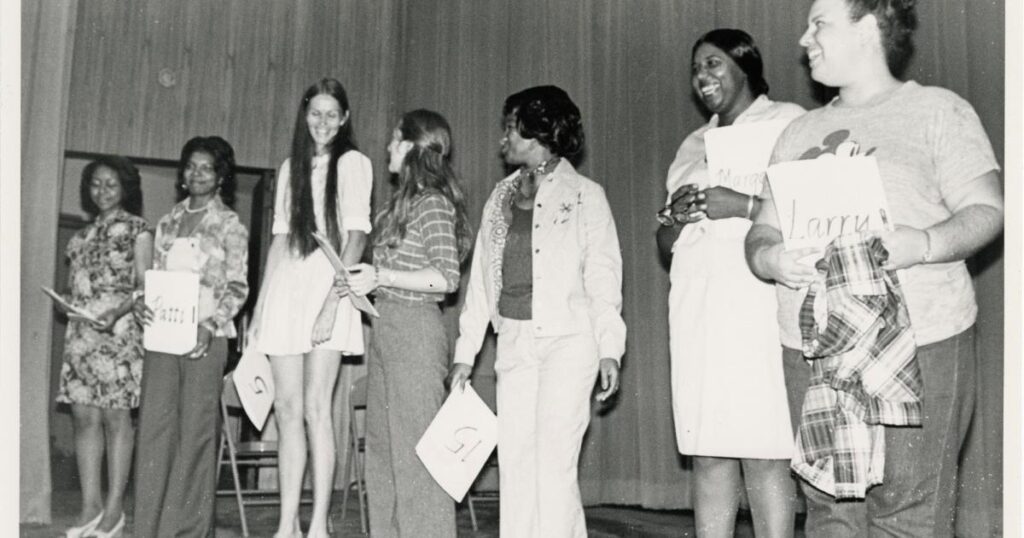On January 9, 1975, President Gerald Ford enacted Executive Order 11832, establishing the National Commission on the Observance of International Women’s Year. This initiative arose during a time when activists worldwide were fervently advocating for women’s freedom and equality in the aftermath of World War II. In 1965, the United Nations Commission on the Status of Women (CSW) commenced efforts to pass a declaration that would affirm women’s human rights. This endeavor culminated in the adoption of the Declaration on the Elimination of Discrimination Against Women (DEDAW) by the UN General Assembly in 1967, which included eleven articles aimed at eradicating gender discrimination in various areas, including education, electoral rights, and legal equity.
U.S. Engagement in the Global Movement
The DEDAW played a pivotal role in elevating the global fight for women’s rights; simultaneously, American activists were mobilizing to secure equal legal protections for women. During the 1960s and 1970s, there were significant legislative achievements in the pursuit of legal equality. Notably, the Education Amendments of 1972 broadened the scope of the Equal Pay Act of 1963 to encompass professional and administrative positions, which employed a larger number of women. Additionally, Title IX of the Higher Education Act of 1972, co-authored by Representative Patsy Takemoto Mink, prohibited sex-based discrimination in federally funded educational programs and activities. Nonetheless, President Ford recognized that these legal advancements did not fully address the persistent discrimination women faced. He stated, “Significant progress continues in advancing the rights and responsibilities of women, in opening new opportunities, and in overcoming political, legal, social, and economic handicaps to which women have long been subject. Americans must now confront those inequities that remain barriers to women’s full participation in our Nation’s life.”
As the global movement for women’s rights progressed in the years following DEDAW, the Commission on the Status of Women sought to establish an international women’s year and conference to confront gender inequality. In 1972, the UN General Assembly endorsed this initiative, declaring 1975 as International Women’s Year, with Mexico City designated as the venue for the inaugural UN World Conference on Women. President Ford remarked that the UN’s designation provided an extraordinary opportunity to focus national attention on the rights and responsibilities of women. His executive order appointed a commission of 35 members with the mission of “encouraging cooperative activity in the field of women’s rights and responsibilities” and promoting “equality between men and women.”
Analyzing Barriers to Equality
The United States actively participated in International Women’s Year, both domestically and internationally. In addition to sending three delegates to the World Conference on Women in Mexico City, numerous events celebrating International Women’s Year unfolded across the nation in 1975. The commission – established through President Ford’s executive order – collaborated with 200 non-governmental organizations dedicated to women’s rights and conducted many public hearings prior to publishing their comprehensive report titled “’…To Form a More Perfect Union…’ Justice for American Women.” Significant hearings occurred in various locations, including Window Rock, Arizona, during the Southwest Indian Women’s Conference, and Boston, Massachusetts, hosted by Wheaton College. Activities also took place at the Smithsonian Institution in Washington, DC.
The commission dedicated a full year to research and engagement with partner organizations before releasing their report in 1976. This extensive 400-page document contained 115 recommendations addressing critical issues such as women’s roles in the workforce, eliminating discrimination in divorce proceedings, improving access to credit for women, enhancing how sexual assault cases are handled, and addressing women’s representation in media, among others. The report was not only presented to the president but also made accessible to the public. Jill Ruckelshaus, the commission’s presiding officer, encouraged “all Americans, women and men, government policymakers and private citizens alike, to read this report thoughtfully and to utilize its recommendations to ‘form a more perfect Union.’”
The Enduring Impact of International Women’s Year
In light of the growing grassroots support and activism advocating for women’s rights, Congress extended the commission’s mandate from 1975 to 1978. Over the next three years, events were held nationwide, culminating in the first National Women’s Conference (NWC) in 1977 in Houston, Texas. President Jimmy Carter endorsed the commission upon taking office in January 1977, joined by First Lady Rosalynn Carter and former First Lady Betty Ford, both of whom vocally championed women’s rights at the NWC. Chaired by Congresswoman Bella Abzug, the NWC became the first of its kind to receive federal funding.
The conference aimed to develop a “Plan of Order” that would be presented to the Carter administration. Attendees collectively voted on the twenty-six resolutions featured in the plan. In March 1978, the commission published its final report, The Spirit of Houston, yet scant action was taken in response to its findings. Although the conference and ensuing report addressed several pivotal issues, some of which sparked division among activists and led to a loss of bipartisan political support, President Carter did establish the National Advisory Committee for Women to carry forward the commission’s work after 1978, but further actions to address the challenges highlighted in the report were limited.
International Women’s Year represented a significant uptick in women’s rights activism across the United States. The grassroots national activism, along with the commission established by President Ford, placed the U.S. firmly within a global framework for gender equality. The reports generated by the commission remain essential documents, highlighting the diverse issues affecting women. Furthermore, the NWC in 1977 propelled the rise of political activism among women from varied backgrounds, creating a more inclusive discourse surrounding “women’s issues” that bridged racial, economic, and political divides.
Notes
-
Executive Order 11832—Establishing a National Commission on the Observance of International Women’s Year, 1975, The American Presidency Project.
-
“’… to form a more perfect union …’ : Justice for American Women” Report of the National Commission on the Observance of International Women’s Year, 1976, HathiTrust Digital Library.
Further Reading
International Women’s Year (1975) Research Guide, Harvard Radcliffe Institute Schlesinger Library on the History of Women in America.
Report of the World Conference of the International Women’s Year, Mexico City, 19 June-2 July 1975, United Nations, 1976, United Nations Digital Library.
The Spirit of Houston, An Official Report to the President, the Congress and the People of the United States, National Commission on the Observance of International Women’s Year, 1978, University of Houston Digital Collections.


